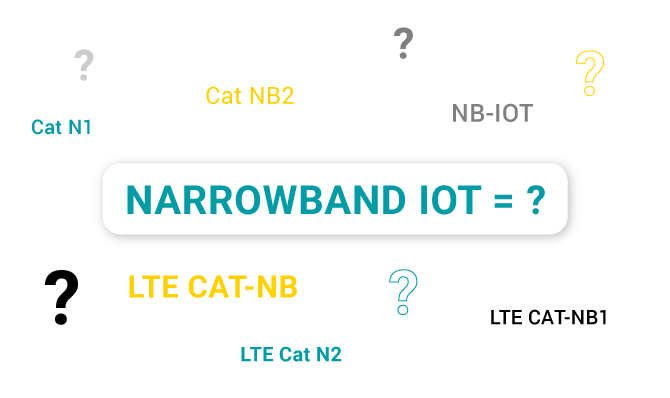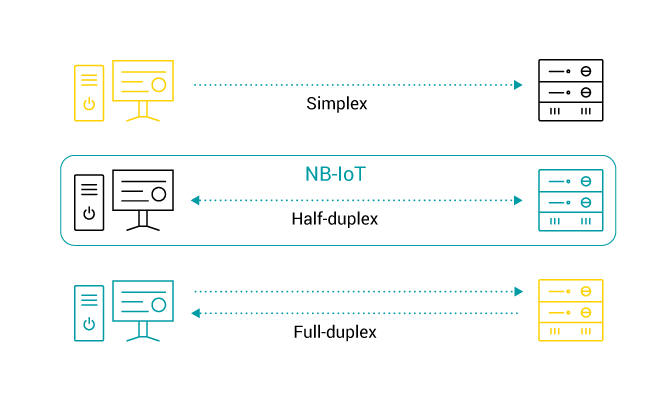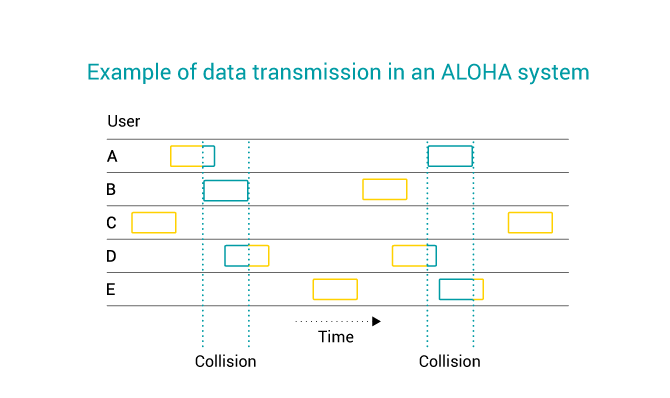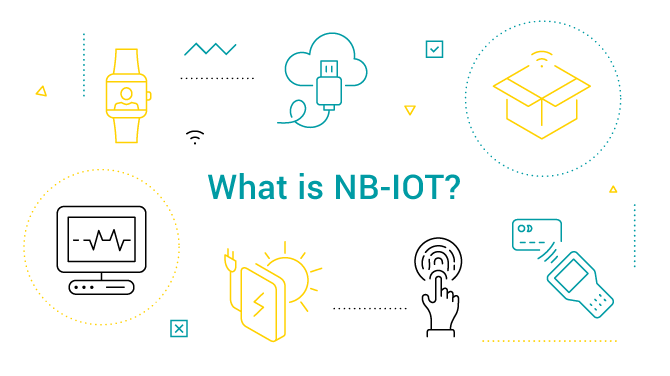As one of the fastest growing Internet of Things connectivity technologies with a strong industry backing and global standardization strategies in place, NB-IoT promises to take the IoT market to a higher level. And all this in spite of (but also thanks to) a whole new business reality that we have, quite unexpectedly, woken up to in recent months.
The first half of 2020 has challenged enterprises across all industries as the world faced a pandemic-induced crisis. Despite signs of recession that have been repeatedly circulating the globe, the hard times don’t seem to hold sway over the Internet of Things market. Quite the reverse: according to recent studies, the new worldwide situation opens up new outlooks for the IoT enterprises in a vast array of fields where security, surveillance and social distancing come into play. In fact, experts pronounce the growing demand for IoT solutions to stay permanent due to many emerging pandemic-driven challenges that are yet to come.
What is Narrowband IoT?
Narrowband IoT, also known as LTE Cat NB, is a low power wide area technology (LPWA) developed with the aim to connect multiple Internet of Things devices and empower IoT architecture using existing mobile networks. In a nutshell, it is a narrowband and low power technology that handles small amounts of two-way data transmission in an efficient, secure, and reliable manner.
High hopes for a narrowband revolution
Currently, there are hundreds of different Internet of Things applications. Their diversity often requires an equally diverse choice of networks. For example, key machine-to-machine (M2M) communication, such as remote device operation works best with LTE or the 5G wireless communications standard. For short-range networks, such as computer networks or connecting smart equipment at home, LAN or WiFi connections are sufficient.
But what is the place of Narrowband IoT amid all the IoT-related hype? As a relatively new but fast-growing radio technology standard specially dedicated for the Internet of Things applications, NB-IoT is designed to cover use cases that require sending only small portions of data, but over long distances. Therefore, it is forecasted to lead the Internet of Things connection growth, especially in areas where high connection density, extended battery life, low cost and enhanced indoor coverage are of critical importance.
Using a subset of the LTE standard, Narrowband IoT supports a large number of connections per base station and provides deep indoor penetration thanks to its – you guessed it – narrowband specification as well as additional 20dB of amplification compared to the GPRS signal. All this leads to low power consumption, which in turn results in its modules reportedly having an estimated battery life of up to 10 years. Additionally, it costs much less than other M2M/IoT technologies.
For these reasons, NB-IoT is very well suited for applications requiring only low bandwidth, such as intelligent parking systems, smart meters and waste management. In fact, NB-IoT enables the introduction of Internet of Things solutions in areas where this was not previously possible due to technical limitations and low cost-efficiency.
Unlike other LPWA technologies such as LoRa and Sigfox, NB-IoT is based on the latest 3GPP standard in the licensed band. It is therefore possible to use an already existing, reliable infrastructure; but we’ll tackle this cellular versus non-cellular clash in the next section.
NB-IoT and other low-power wide-area (LPWA) networks
To gain a broader picture of the global market of IoT connectivity standards, let us focus now on the place of Narrowband IoT amidst its competitors.
LPWAN stands for low-power wide-area network. While not denoting any particular technology, it serves as a generic term for any network of connected devices designed to transmit data wirelessly using less power than other communications technologies, such as telephone, satellite communications, or WiFi networks.
Additionally, another distinction should be made between LPWAN and other low-power networks. While Bluetooth Low Energy, RFiD or NFC, for example, are short-range solutions, LPWANs can communicate over significantly longer distances: longer means here a range up to 50 km (depending on the terrain conditions that the networks operate in – in rural areas the range tends to be larger than in densely built-up city environments).
Generally, low power communications over long distances only allow small amounts of data to be transmitted. While modern telephone networks offer speeds within the order of several gigabits per second, as with the LTE Advanced and 5G standards, LPWA is designed to transmit significantly less data, often only a few kilobits per channel. This gives enormous growth opportunities for many IoT standards like LwM2M and other IoT protocols that are dedicated to the management of resource-constrained devices (think any IoT sensors, actuators and controllers).
Cellular vs non-cellular LPWANs
It is important that a distinction should be made between the two main technologies within the LPWA ecosystem: one is based on cellular connectivity, while the other was established essentially as a non-cellular alternative to the GPRS standard that was popular back in the day.

Non-cellular network solutions

Sigfox has been developed as an IoT network independent of traditional telephony infrastructure and is designed for low speed communications to reduce costs and energy consumption of connected devices. Furthermore, the communication, apart from being low speed, is also based on a very narrow band, which allows the devices to have higher power of penetration through obstacles, facilitating communication over long distances, even in urban areas. The Sigfox network is based on a structure formed by antennas and base stations distributed throughout the territory that collect data from endpoints and transport it to the Sigfox server where the data is stored.

LoRa is a non-cellular modulation technology for LoRaWAN. However, these two terms – LoRa and LoRaWAN – are not interchangeable: while LoRaWAN is the standard protocol for WAN communications, LoRa should be understood as a wide area network technology.
LoRa stands for a radio network developed for IoT solutions that has better link budgets than similar radio technologies. But here's the catch: if you want to connect to LoRaWAN networks – or use LoRa at all – you will need to deploy a network gateway on your own (apart from a few markets in Europe where this is not the case).
What is key about this technology is that it can be used by non-mobile operator customers to implement solutions, unlike NB-IoT or LTE-M.
Cellular network solutions
LTE-M is a network technology standard based on 4G published by 3GPP in version 13 of its specifications. In order to meet the criterion of low power stipulated in the LPWA specification, the 4G wireless chips have been designed based on a special power-saving mode. In essence, the chips are off most of the time, and only wake up at predetermined intervals. In addition, the chips are semi-duplex, so they use less power even when they are turned on. On the other hand, they are much slower than the conventional 4G connection, with maximum data rates of about 100 kbits/s. This version of LPWA offers low power connectivity, but limited to places covered by LTE.
Narrowband IoT arose as the mobile industry’s response to non-cellular LPWAN and as such, offers advantages that these proprietary technologies aren’t able to provide. First of all, NB-IoT operates within an ecosystem that is well-recognized and consistent throughout the globe. Secondly, thanks to a high level of standardization, NB-IoT proves to be interoperable across locations, vendors and both mobile or mobile virtual network operators (MVNOs). Moreover, it offers end-to-end quality of service (QoS) assurance and uses licensed spectrum to provide greater reliability and performance (think ultra-low latency and higher data rates which are parameters critical for such IoT applications as healthcare and road safety). Lastly, significantly better network scalability of cellular LPWAN technologies breaks down the problem of installation capacity upgrades.
Achieve IoT project success faster with our expertise.
Speed up your time to market using LwM2M standardization and pre-built integrations for hardware and the cloud.
NB-IoT by any other name
Before we go into further details on the technical specifications and possible real-life applications of NB-IoT, it is necessary to dispel possible misunderstandings that may be due to a number of different names that the technology goes by.
As it has been already said at the beginning, Narrowband IoT is also referred to as LTE Cat-NB. But you may come across other terms, such as LTE Cat-NB1 and Cat N1; note that these apply to the NB-IoT specification frozen in 3GPP Release 13 back in 2016. Circulating are also terms like LTE Cat N2 or Cat NB2, which refer to the enhanced Narrowband IoT specifications that have been introduced with 3GPP Release 14. It is important to note that the Cat NB1 and NB2 naming convention is usually applied to devices that support the relevant version of the Narrowband IoT technology.
NB-IoT specifications
Narrowband IoT, as the name itself suggests, has been designed to operate utilizing narrow spectrum bands of either 180 kHz or 200 kHz. In addition, taking into account that high connection speeds are not essential in projects involving NB-IoT, favouring connection stability instead, the standard allows for transfers of up to 250 kbit/s and offers latency from 1.6 to 10 seconds.
Since NB-IoT is a cellular technology, it uses the cellular bands of communication and was designed to operate in three different ways: using the GSM band to replace existing deployments (standalone), using the LTE band while sharing it (in-band) or, using the spacing between the LTE channels to maximize the communication spectrum (guard-band). NB-IoT is half-duplex, which boils down to the fact that it efficiently enables uplink communication, i.e. allowing a connection to the cellular network, the allocation of network resources to the node (known as User Equipment or UE) and the transmission of data.
As for the NB-IoT enabled devices, the most typical scenario of device operation involves the following: the device remains disconnected from the network until it has some data to transmit (e.g. a meter reading), then it establishes the connection, transmits the data and disconnects. Once the connection is established, the device maintains it (RRC Connected) for a configurable time until it becomes inactive (RRC Idle) and ends up disconnecting. During the connected mode (RRC Connected), the UE can request more resources and transmit more data, which basically reflects how things work within the LTE architecture. NB-IoT also allows an immediate disconnection once the data confirmation is received, but this implies the lack of a downlink window. As a result of its LTE-based structure, where the initial design assumed permanently active connections, the greatest effort has been made to enable the downlink without involving a very high power consumption.
In view of this, it is yet important to highlight that there are some significant differences between the LTE Cat-NB1 version of the standard and LTE Cat-NB2, its immediate successor. One of the most welcome improvements introduced with the arrival of Cat-NB2 is OTDOA (Observed Time Difference of Arrival) and E-CID (Enhanced Cell ID), which combined make for improved location accuracy. Another great change has been made in connection to mobility. Unlike Cat-NB1, where reconnection is only possible in idle mode, thus disabling any kind of mobile functionality, Cat-NB2 offers support of reconnection in connected mode to greatly improve asset mobility.
As for the most interesting differences in parameters between the versions, these are presented in the table below:
| LTE Cat-NB1 | LTE Cat-NB2 | |
| Max Downlink TBS | 680 bits | 2536 bits |
| Max Downlink Data Rate | ~26 kbps | ~80/127 kbps |
| Max Uplink TBS | 1000 bits | 2536 bits |
| Max Uplink Data Rate | ~62 kbps | ~105/159 kbps |
| Positioning | Cell ID | OTDOA, E-CID |
Source: Haltian
NB-IoT advantages
Now that the inner workings of NB-IoT have been explained in general terms, let us go on to discuss some of its advantages and disadvantages in comparison to other LPWAN technologies.
Firstly, a point should be made about the reliability of NB-IoT as a technology: as it guarantees the delivery of the data, it gains the upper hand in comparison with other LPWAN technologies based on simple access mechanisms like ALOHA. Another thing that adds to the reliability of the technology is its use of licensed band spectrum as it does not have to coexist with other technologies.
Taking LoRaWAN as an example, if the coverage of an area is low, an extra gateway can always be deployed, but with NB-IoT this depends entirely on the operator’s side. Weaker network coverage has implications on the power consumption of the device too: nodes that are covered by worse signal will spend more energy, as they will have to transmit data using higher power, which in turn may result in lesser performance in applications where a minimum battery life must be guaranteed (think smart parking). 
Finally, it is worth highlighting NB-IoT’s great coverage in urban environments. Therefore, it means that devices depending on 4G coverage would work very well indoors (including underground infrastructures) as well as in dense urban areas.
NB-IoT applications
The NB-IoT network has been widely employed in industry, agriculture, healthcare, logistics, and, quite obviously, in smart cities and buildings. Its purpose is to facilitate the work of technicians, retailers and operators while handling machines by providing real-time technological data and supporting remote monitoring systems, to name only a few example use cases. Here is an overview of some of the major potential markets for NB-IoT services:
As NB-IoT range expands, a wide variety of smart solutions for agriculture and livestock are cropping up that aim to achieve a farm of the future: an autonomous and connected set of solutions to give more precision and reliability in agricultural techniques, condition measurement IoT sensors, livestock tracking (with movement alerts), monitoring of soil parameters, pollution rates, intelligent rainfall prediction systems, and many others.
Narrowband IoT connectivity opens up possibilities for extensive monitoring and alerting for those who suffer from chronic or age-related diseases, thanks to which doctors will monitor their patients remotely and in real time. Taking the current geosocial situation, solutions are also being developed to help in ensuring the social distancing measures and other pandemic-related policies.
Speaking of which, NB-IoT-enabled wearable devices can be used to control the exact location of the wearer. Specially designed for elderly people or children, they can also be used for animals (pets, cattle...). While it may sound a little disturbing to some, it proves particularly useful when it comes to tracking and identifying infected individual’s movements and points of contact with other people or animals.
With Narrowband IoT, industries are becoming much more autonomous, efficient and productive. With the technology in hand, smart factory solutions, such as geolocating moving assets to optimize logistics, checking their status and collecting valuable information about them will be much easier to implement. Also, NB-IoT-based solutions will enable tracking, monitoring and diagnosing production objects in real time to intervene before a failure occurs (predictive maintenance).
Managing emergency or anti-theft alarms in homes and businesses; smart consumption measurements (electricity, gas and water); intelligent lighting and air conditioning; air quality... all of this with the use of NB-IoT may translate to reduced costs and lower environmental impact.
Thanks to the possibilities offered by NB-IoT, local governments will be able to efficiently control street lighting, free parking spaces or environmental conditions, and much more.
NB-IoT: estimates for growth
According to recent studies, by 2026 cellular LPWAN solutions (that is NB-IoT and LTE-M combined) will be responsible for over 60% of the estimated 3.6 billion Low Power Wide Area network connections, with the remaining 40% covered by non-cellular, of which LoRa and Sigfox will account for the majority (around 80%).
In April 2019, a report was presented on the state of development of NB-IoT and LTE-M worldwide. Among other things, it interestingly states that at the time of its publication:
- 124 NB-IoT or LTE-M networks (handled by 104 operators) were implemented / deployed
- 141 operators were actively investing in the NB-IoT technology, compared to 116 the year before, including:
- 90 operators to implement / commercially deploy a NB-IoT network
- 30 operators to plan and/or implement a NB-IoT network
- 21 operators to test the NB-IoT technology.
The NB-IoT die is cast
In a world where new technologies constantly emerge and try to establish their leadership in highly competitive market ecosystems, LPWA networks have really revolutionized the Internet of Things sector. Since they are proven to be ideal for devices that transmit very small amounts of data at low speed on a daily basis, these medium- and long-range networks still have great potential for development, especially in view of the shaky pandemic-affected market of today.
As one of the LPWA technologies, NB-IoT offers its own competitive edge over its rivals and responds to specific sets of applications. Narrowband IoT is a perfect match for deployments that combine the requirements of indoor coverage and low device power consumption with massive numbers of low throughput and super-low-cost devices. What the adopters of this LPWAN technology find in NB-IoT is great interoperability, scalability and standardization that lead to increased flexibility, time-to-market and robustness.
In the near future, 5G networks will homogenize all the cellular networks, as they integrate two channels: low and high speed. But before that happens, the real challenge is to pick the ideal solution for your needs without losing sight of the future development perspectives, which in the case of NB-IoT seem brighter than ever.
